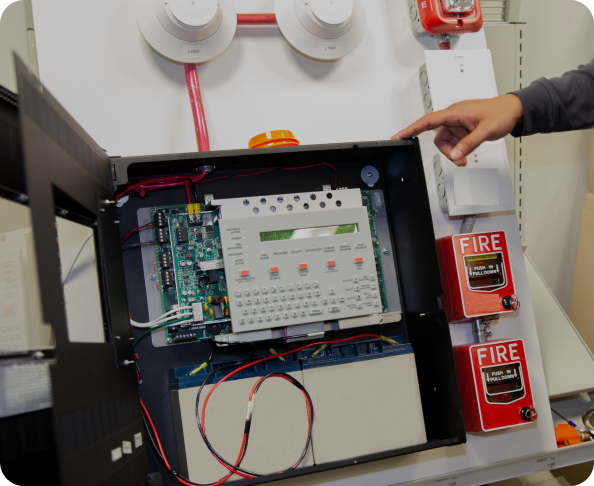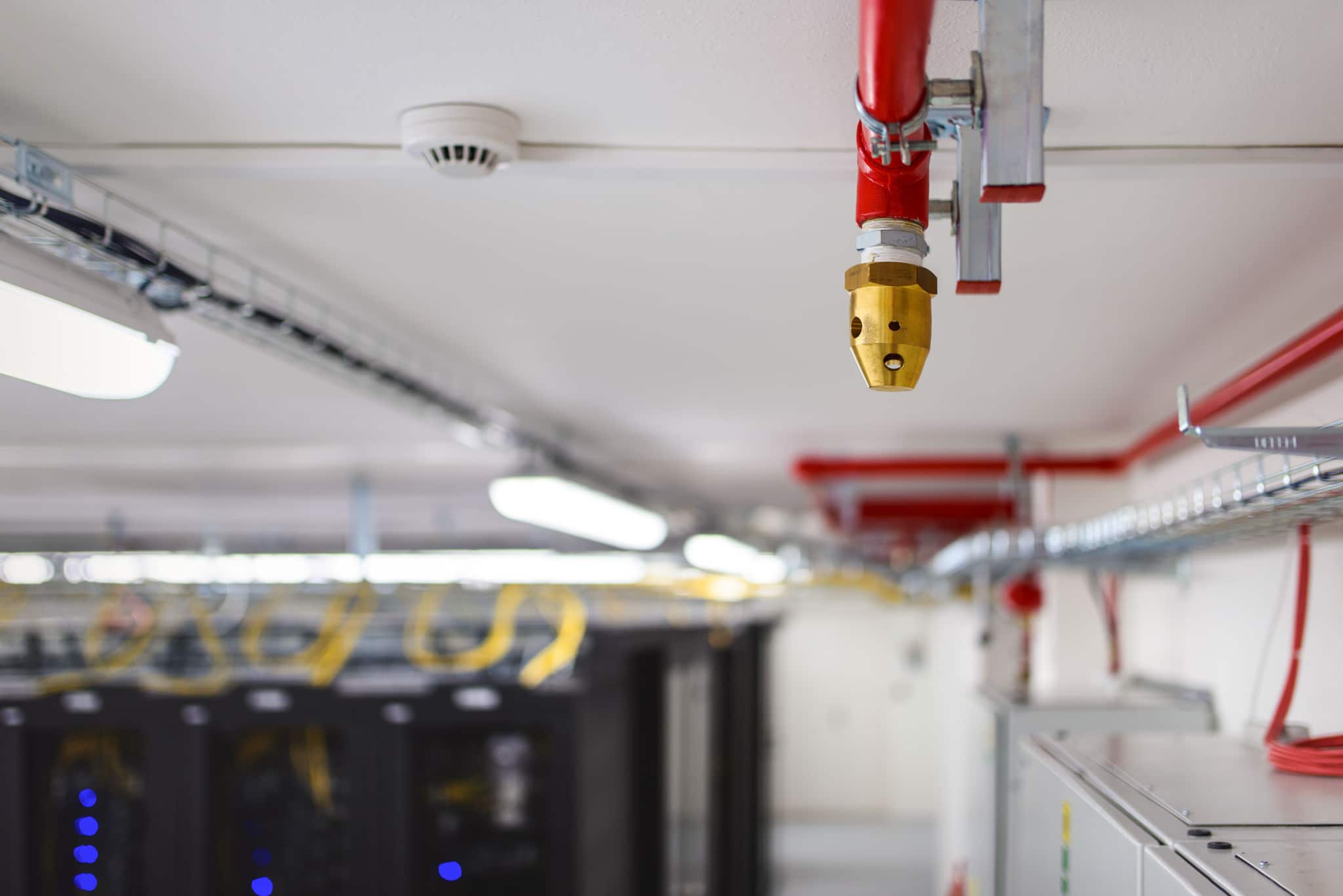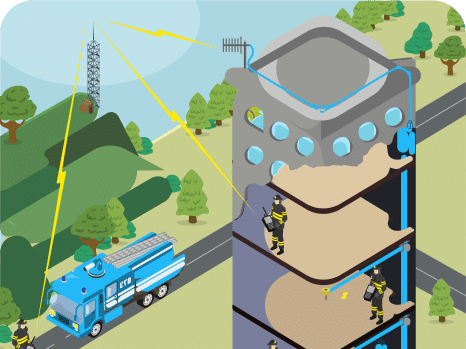What is a Fire Alarm Annunciator Panel and Why is it Necessary?
A fully functional fire alarm system in a building is vital in keeping occupants and valuable assets safe in the event of a fire emergency. Ensuring all the components of the fire alarm system are functioning properly is paramount.
A fire alarm annunciator panel is a real-time solution for safety personnel and first responders. The annunciator panel is an illuminated display that provides an at-a-glance visual status of the various components in a building’s fire alarm system. Depending on the complexity of the system, the fire annunciator panel would instantly provide information on heat and smoke detectors, emergency exits, manual fire alarm pull points, power supplies, fire suppression systems, notification devices, and more. An annunciator can help first responders identify the location of a fire, depending on what systems have been triggered. The fire annunciator panel also assists in maintaining a fire alarm system by indicating which components of the system are not working properly.
Without a fire alarm annunciator panel, emergency and maintenance teams are literally flying blind with their building’s fire alarm systems.
Understanding Fire Alarm Annunciator Panels and How They Work
To be clear, a fire annunciator panel is just part (a critical part!) of a more comprehensive fire alarm control panel. The fire control panel is responsible for the overall operation and performance of the fire alarm system. In the event of a fire (or immediate danger of a fire), the control panel processes signals from all fire system devices. Then, based upon the information received, the control panel will trigger alarms to warn occupants, activate extinguishing and suppression systems, communicate with outside emergency agencies, and more.
As a sub-system of the fire alarm control panel, the fire alarm annunciator panel provides real-time information about the operational status of the devices and components in a fire alarm system. The fire alarm annunciator panel works by incorporating signals from sensors on all fire alarm system devices. These signals are aggregated onto an easy-to-read display of lights, text and audio warnings that provide the current status of the fire alarm system to the building management team and first responders. The fire annunciator panel shows if any alarms or devices have been activated and the location, which can be pivotal in how to respond to an emergency.
Types and Components of Fire Alarm Annunciator Panels
There are two main types of fire annunciators, each with features and benefits – Conventional and Addressable. The type of annunciator is typically determined by the overall fire alarm system. Conventional fire annunciators are part of a less complex more traditional fire alarm system found in smaller buildings. They group devices into zones, as opposed to recognizing individual devices, which is the primary difference between conventional and addressable annunciators.
Because conventional annunciators are part of smaller fire alarm systems, they tend to be simpler in design and easier to operate. However, they don’t provide as much detailed information on the individual components of the fire alarm system. And while they are less expensive to purchase and install, they can be more expensive to maintain and repair.
Conventional annunciators allow smaller and less-trafficked buildings and facilities to have an adequate fire alarm system. Due to their easier operation, they don’t require specialized technical expertise from your staff. Best of all, they are tried-and-true assets of fire alarm systems.
Addressable annunciators are more sophisticated to go with modern fire alarm system technology. Addressable annunciators have a unique identifier for every fire system device or component, which also provides the precise location of the device within a building. This level of detail can be crucial in quickly developing a go-forward plan in a fire emergency. Also, each device can be individually monitored and programmed for easier maintenance and troubleshooting.
The advantage of addressable annunciators is that they are more accurate in identifying a fire’s location than conventional annunciators. Plus, the sensitivity of each fire system device can be adjusted to reduce false alarms. And addressable annunciators generally provide status reports for ongoing maintenance.
Depending on the type of annunciator panel, the components may (or may not) include:
- Main control panel: This provides at-a-glance, real time status information on the fire alarm system components.
- Indicator lights: The lights on the panel provide instant visual information. Newer panels provide LED lights that change color to represent different statuses and functions, such as ready, off, activated, etc.
- Graphic panels: This panel provides a map of the structure so personnel can see the location of individual devices within a structure.
- LCD panels: These provide a text display with descriptions of alarms, location, and status. Many LCD panels are touch screen and interactive.
- Hybrid panels: These work with both conventional and addressable annunciators, which can help save time and costs if a fire alarm system is upgraded.
- Integration interfaces: Advanced annunciator panels communicate with other systems in the building and not limited to the fire control panel. This helps with a coordinated, automated response to different types of emergency situations.
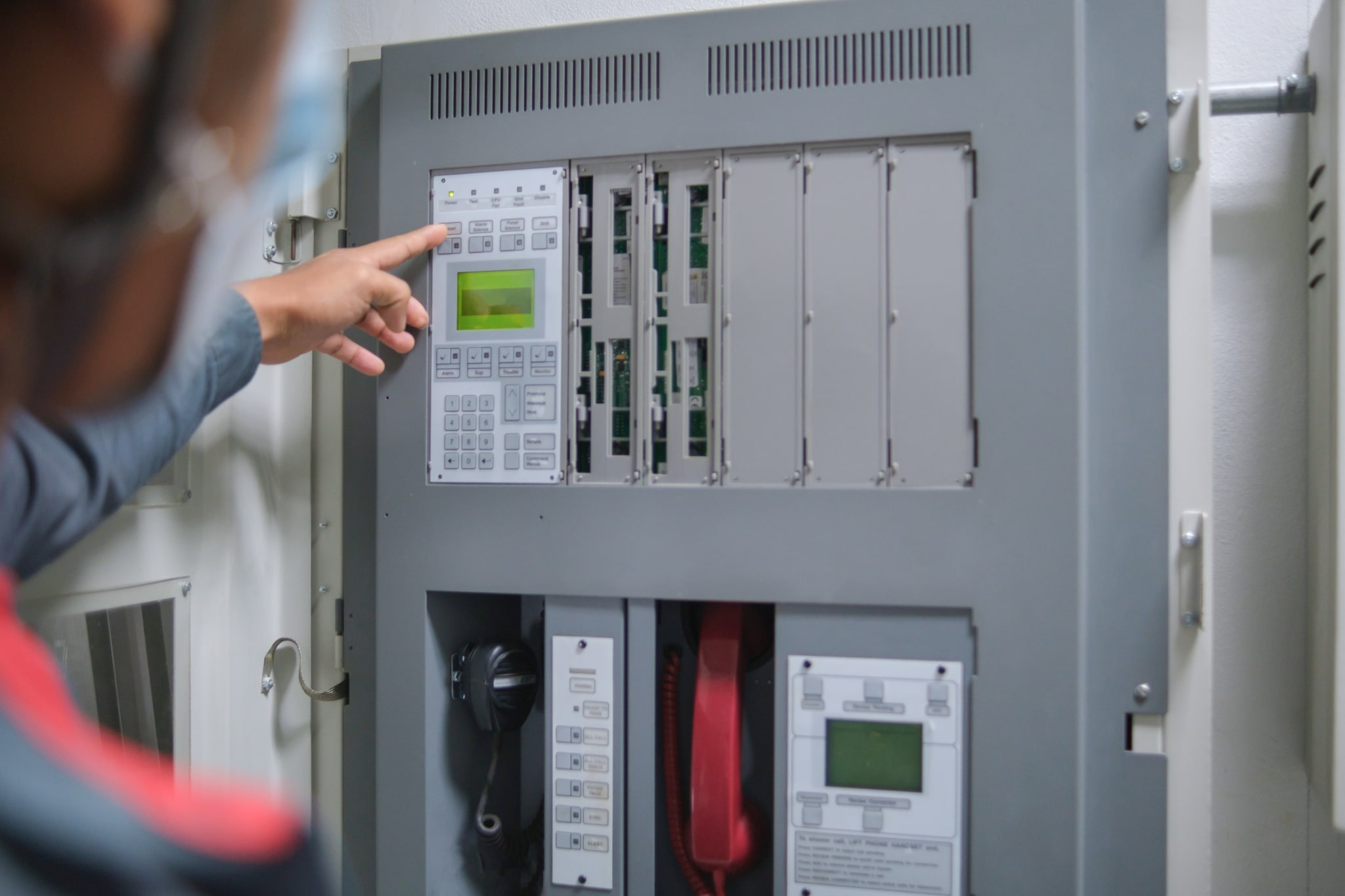
Benefits of Fire Alarm Annunciator Panels
A fire alarm annunciator panel is one of the primary components necessary for the safety of the building’s occupants and all of its assets. The benefits include:
- Enhanced safety: The fire annunciator panel is often the first thing emergency personnel will access. They can instantly see if any devices are non-operational, if any are triggered and where, and activate any components that are necessary.
- Quicker response time: Instant visual information provided by the annunciator panel allows emergency personnel to act quickly and appropriately.
- Compliance with safety regulations: All fire safety systems are required to have a fire annunciator panel. In turn, the panel helps determine if any components of the fire safety system needs to be serviced or repaired. This also includes required reporting on fire systems.
- Reliable communication during emergencies: An immediate, accurate assessment of a fire safety system is a must during an emergency. The annunciator panel is the first line of defense, telling first responders in real time the exact status of the building’s fire safety system.
Choosing Your Fire Alarm Annunciator Panel
The selection of an appropriate fire annunciator panel for your building will likely be impacted by the fire alarm system that it will be supporting. Factors to consider include:
- Building size and layout
- Various types of detection devices and other system components
- The number of devices required for monitoring
- The level of required reporting of the system
- The technical knowledge of staff
The budget for the system will also play a significant role, so it’s important to consider the cost of installation, as well as maintenance of the system and the training required of the staff to operate it.
The best course of action when investigating a fire alarm annunciator solution is to work with a professional, experienced team, like Sciens, that can ask the right questions to ensure your fire alarm annunciator panel provides precise, actionable information in the event of an emergency.
Installing and Maintaining Your Fire Alarm Annunciator Panel
Once you have selected a fire annunciator panel it must be installed properly. This involves a deliberate and well-executed plan. For instance, a fire annunciator panel must be located in an area that’s readily accessible and easy to see and to use for first responders, yet still protected from the daily operations of the building.
Once the optimal location is determined, the installation (mostly wiring) must be done to adhere to all codes and specifications. The proper fire-rated cabling must be used to connect the annunciator to the primary control panel and properly powered. Then consider how and where it’s mounted. Ensure that the mounting can support the weight of the panel and that it’s at eye-level if possible.
Lastly, the fire annunciator panel requires meticulously precise programming. For conventional panels, this means ensuring all zones are set up properly and the display is customized accordingly. The panel can’t be hard to figure out for first responders. With addressable panels, there is even more involved to properly connect all the individual devices and properly address each according to their location. Again, it must be easy to understand. The panel is of little use if first responders can’t figure out where an alarm is going off.
Once the fire annunciator control panel is installed and tested, it requires proper, timely maintenance, just like the overall fire safety system. This includes weekly visual inspections to look for any damage, ensure all connections are made, and look for error codes on the display. Monthly functional testing is also important. Test all the pull stations, smoke and heat detectors, and any notifications on all devices according to manufacturer specifications.
Testing your fire annunciator panel should be part of your overall fire safety system testing protocol. But as one of the first touchpoints in an emergency, the operational integrity of the fire annunciator panel is key.
Troubleshooting a Fire Alarm Annunciator Panel
There are many common problems that arise with annunciator panels. The good news is that they often come with simple solutions.
- False alarms: False alarms can be an expensive headache. Check the sensors for dust, debris, bugs or anything else that can interfere with sensors of detection devices. Sensors must be meticulously cleaned, aligned and calibrated.
- Faulty lights or displays: Depending on the type of panel, lights can be an issue. Indicator lights may flicker or not illuminate, which may be due to faulty wiring. Text displays may not be legible or display incorrect information. If your panel’s power isn’t hard-wired, it could be the batteries. If not, consult with a licensed alarm technician.
- Nothing is working!: Don’t panic. Sometimes this is a simple software update, or the power supply might be disconnected.
Don’t forget to consult with manufacturer documentation, which will have troubleshooting advice, and to have a professional technician (like we have at Sciens!) on standby, just in case. A properly functioning fire alarm annunciator panel is vital to the safety of your staff.
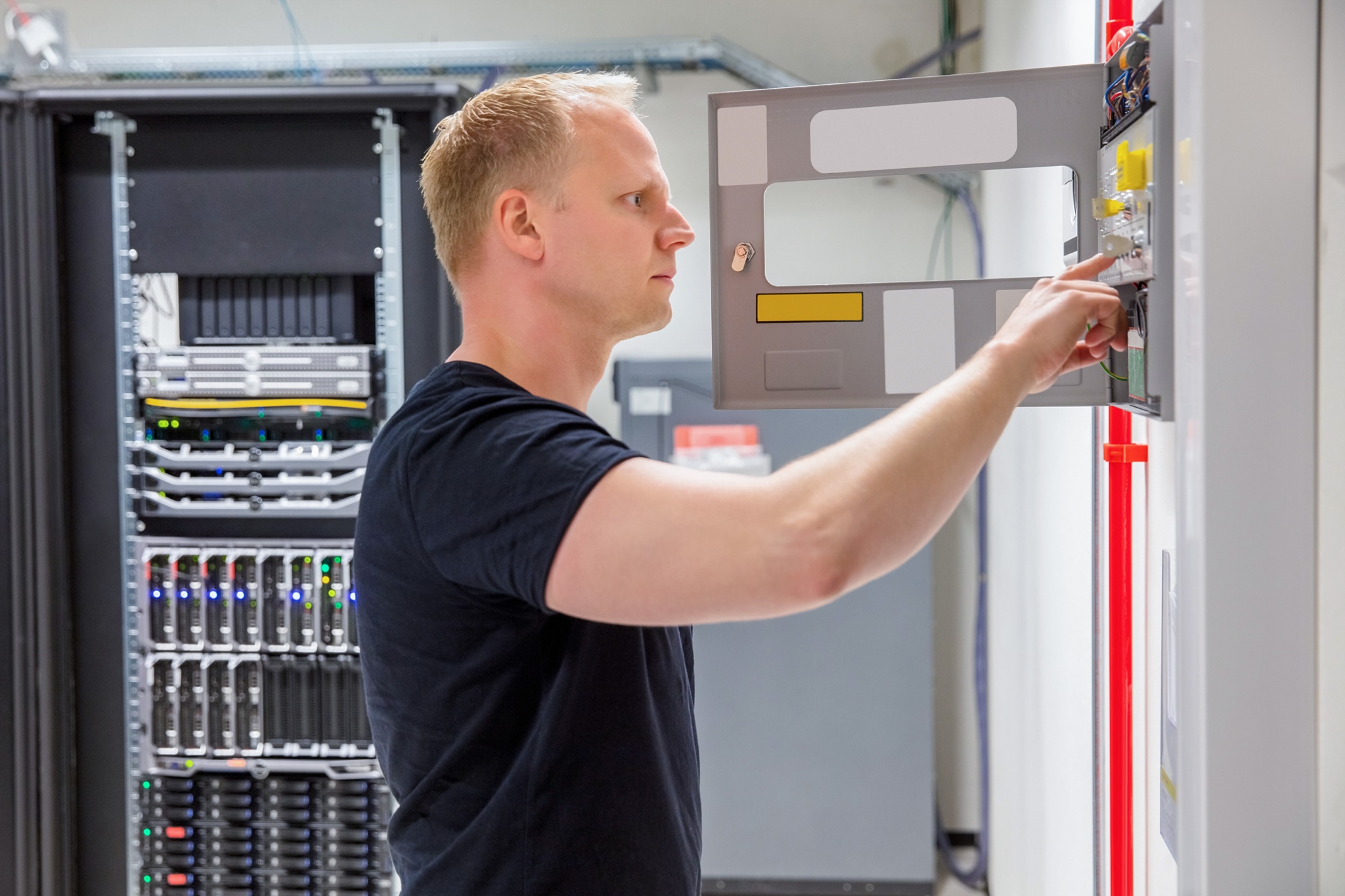
What’s Next for Fire Alarm Annunciator Panels
Fire alarm annunciator panels continue to become more sophisticated. Technological advancements in both design and functionality are resulting in improved performance and increased standards of safety. This includes:
- Resistive, capacitive and P-Cap touch screens
- More intuitive, icon-based interfaces
- More durable and easier to read displays
- More automation and integration with larger emergency ecosystems
And modular systems are evolving that allow plug-and-play capabilities to integrate new devices that are added to the overall fire safety system.
Smart technology is also contributing to the advancements of annunciator panels. Fire safety systems are the perfect sandbox for Internet of Things (IoT) connectivity, which facilitates the communication of a network of smart devices. Fire annunciator panels and their fire system control panel counterparts can share information in real time with operations managers, allowing for self/remote monitoring, precise diagnostics and control, and detailed analytics and reporting.
Conclusion
The fire alarm annunciator is the hub of a building’s fire safety system, regardless of its size and sophistication. First responders rely on the accurate, instantaneous information it provides to best respond to a fire emergency.
Having a complete understanding of the annunciator’s role in a fire safety system, how it functions, and its vital importance to the safety of your staff and assets is necessary for you to make all important fire safety decisions that impact your business and everyone that’s part of it.
